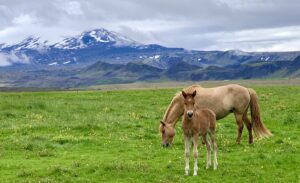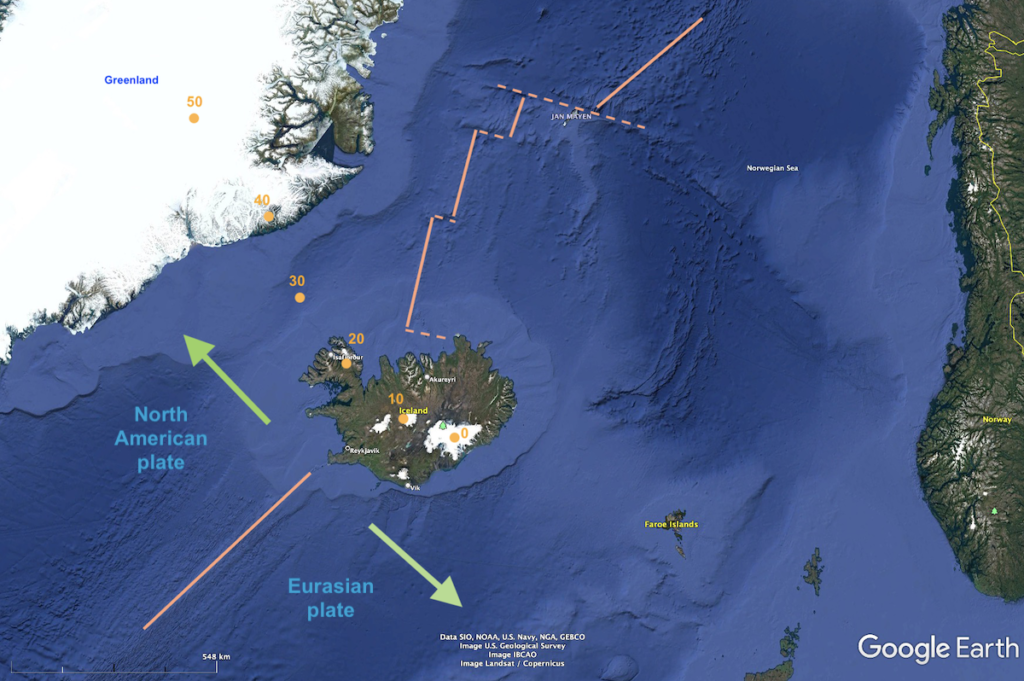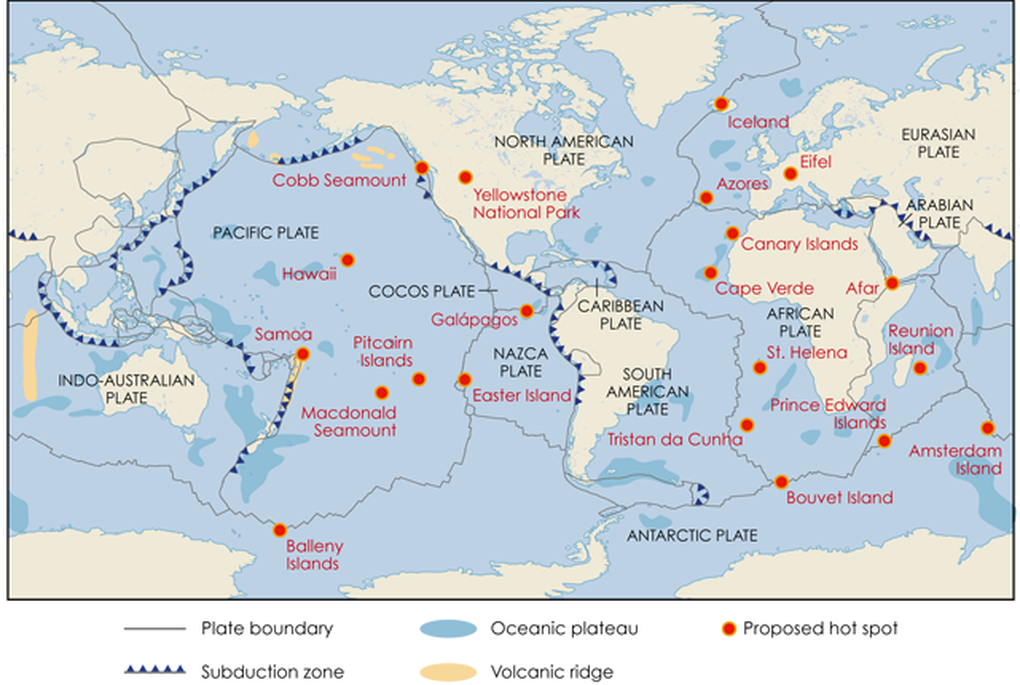Volcanoes galore in Iceland
Iceland's "double whammy" position overlying both a mid-ocean ridge and a mantle hot spot produces vast outpourings of lava that have built the island up from the seafloor. Because of the hot spot, the volume of erupted material is about 10 times that found at normal mid-ocean locations that don't coincide with hot spots. In this post, I'll show some...
Standing between tectonic plates in Iceland
Sitting in the middle of the North Atlantic Ocean is the island country of Iceland. Visiting Iceland is on pretty much every geologist's "bucket list" because of its unique above-water position on a plate boundary where two plates are moving apart from each other (i.e., diverging). During a trip there with other geologists in July, I explored the landscapes of...
Plate tectonics 101—What happens at hot spots?
As seen in my last three posts, most geologic action occurs at the boundaries between lithospheric plates. But in some places we find active volcanoes and earthquakes that are not at plate boundaries. This post will explore these places, where geologic action is occurring at so-called "hot spots". What are these features; what causes them; and what are some of...
The geology of Yellowstone National Park, and its precursors in Oregon and Idaho
Yellowstone has the distinction of being the first national park in the U.S., and probably in the world. President Ulysses S. Grant signed the bill to protect more than one million acres—mostly in Wyoming—in 1872. Yellowstone was set aside because of its hydrothermal displays—the park contains more than 10,000 features, including the world’s greatest concentration of geysers, hot springs, mud...
Craters of the Moon National Monument—a little bit of Hawai’i in Idaho
If you ignore the arid climate and sagebrush vegetation in the Snake River Plain of Idaho, and just look at the landscape of lava, you can imagine yourself on the Big Island of Hawai'i. This photograph shows basalt-type lava in pahoe'oe and a'a flows, with cinder cones in the background. The area is still considered to be volcanically active, with...
Kilauea in Hawai’i—safely visiting an active volcano
Kilauea grabbed the attention of the media and the public when it began a new eruption on May 4, 2018. This is normal business for one of the most active (maybe THE most active) volcanoes on Earth. The Big Island of Hawai'i is located on top of a hot spot that is providing the fuel for continuing volcanic activity—imagine a...
About the Blogger
 Karen (here with Mt. Shasta in background) is a geology professor emerita who aims to provide a "pocket geologist" for world travelers. Follow the blog to explore the landscapes of our planet and figure out what causes them to look the way they do.
Karen (here with Mt. Shasta in background) is a geology professor emerita who aims to provide a "pocket geologist" for world travelers. Follow the blog to explore the landscapes of our planet and figure out what causes them to look the way they do.







